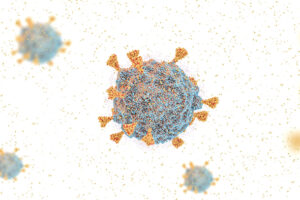Infectious Diseases
Influenza
Improving Vaccination Rates and Reducing Vaccine Hesitancy
Overview
During a live session titled “Strategies to Address Vaccine Hesitancy” from the 2020 AAP Virtual National Conference & Exhibition, Paul Offit, MD, FAAP, discussed aspects of COVID-19 vaccine development and explored strategies to increase acceptance and overcome vaccine hesitancy. The session live-streamed at 12 PM CDT on Saturday, October 3.
Following the presentation, our featured experts, Sean O’Leary, MD, MPH, Mark H. Sawyer, MD, FAAP, FIDSA, and Tina Q. Tan, MD, FAAP, FIDSA, FPIDS, were interviewed by Conference Reporter Editor-in-Chief Tom Iarocci, MD. Their clinical perspectives on this session are presented here.
Sean O'Leary, MD, MPH
|
|
“When parents are hesitant, it is important to point out that we are on the same side and that we want the same thing: for their children to be healthy.”
When parents are concerned about vaccines, it is very common for those concerns to be related to vaccine safety, as reflected by Dr Offit in his review of SARS-CoV-2 vaccine development. Parental concerns about safety may arise with any vaccine, including routine childhood vaccines and seasonal influenza vaccines. As suggested in Dr Offit’s presentation, an understanding of the clinical trial phases and the numbers that are involved in phase 3 trials (ie, potentially in excess of 10,000 volunteers) is often helpful. There is also a vaccine safety surveillance and reporting mechanism in place whereby vaccine safety is monitored to detect any emerging potential safety signals.
Still, opposition to vaccines may have an emotional component, and vaccine hesitancy may even be transferred down over generations. A recent survey of US adults by Malik et al found a 67% acceptance rate of a COVID-19 vaccine overall, but black Americans reported lower influenza vaccine uptake and lower COVID-19 vaccine acceptance than all other racial groups. When parents are hesitant, it is important to point out that we are on the same side and that we want the same thing: for their children to be healthy. And so, it is also important to communicate the science to parents so that they understand why vaccination aligns with their values, but this goes beyond a simple review of the facts.
Although rates of influenza in the southern hemisphere were low this season, I believe that there is a good chance that we will have somewhat of a typical flu season. Further, the intersection of a peaking flu season and a COVID-19 resurgence would be a nightmare scenario that no one in this country should look forward to. In Colorado, we have plans to implement a kind of triple screen in November, with 1 swab that would be a polymerase chain reaction test for SARS-CoV-2, influenza, and respiratory syncytial virus, but this type of testing may not be available in all settings.
Mark H. Sawyer, MD, FAAP, FIDSA
|
|
“If parents want to keep their children as active as possible and physically present in school this year, they should make sure that their children receive an influenza vaccine.”
Efficacy is a major issue with the influenza vaccine, and it is common to encounter people who feel that influenza vaccination does not truly work and that it is therefore not worth the time and effort to be vaccinated. However, efficacy depends on what it is that you are trying to prevent. The influenza vaccine is much more effective in keeping you out of the hospital than it is in preventing an office visit, and I suspect that the same will be true for the SARS-CoV-2 vaccine. Another misperception is that influenza vaccination can cause influenza. So, it is important to correct misconceptions and myths, but, given that there is often an emotional resistance to influenza vaccination, some patients, no matter what you say, will just move from one reason to another for not getting vaccinated (ie, they have already made up their minds).
Nevertheless, it will be very important to be vaccinated against influenza this year in the face of COVID-19. If a child gets influenza, symptoms will be presumed to be associated with COVID-19, and they will not be allowed to attend school in-person. Thus, if parents want to keep their children as active as possible and physically present in school this year, they should make sure that their children receive an influenza vaccine. This is especially true for racially and ethnically diverse communities with health disparities that increase their risk of severe illness with influenza and also of severe COVID-19. The good news is that we have decades of experience with the influenza vaccine and we have not identified any unique safety or efficacy concerns based on race and ethnicity. Access to influenza vaccines is much less of an issue today than in the past.
Tina Q. Tan, MD, FAAP, FIDSA, FPIDS
|
|
“For those children who are old enough to make a decision regarding the choice of influenza vaccine, many parents tell them that, while they do not have a choice about whether to receive the vaccine, they may be able to choose the route (ie, inactivated influenza vaccine injection or LAIV intranasal spray).”
In the current environment, many people have lost confidence and trust in agencies such as the US Food and Drug Administration (FDA) and the Centers for Disease Control and Prevention (CDC). Our understanding of SARS-CoV-2 has evolved as more and more data have become available, and the guidance issued initially, at the beginning of the outbreak, did not necessarily reflect the evolving understanding. Further, these agencies have issued recommendations and/or statements that were subsequently retracted, and I think that this has shaken the public’s confidence. It is good that Anthony S. Fauci, MD, is reassuring the public that there is no political influence in decisions by the FDA or the CDC. I also agree that there are a lot of myths that circulate in the community, as well as misinformation on the internet, and all of that just fuels the fire for these individuals who really just feel like they do not want this vaccine.
It is particularly critical for people to receive the influenza vaccine this season because it is going to be a major disaster if we have a terrible flu season and we have a resurgence of COVID-19. My experience so far this season is that there are more people willing to get the influenza vaccine, but there is still that minority who are adamantly against it, no matter what. Needle phobia can be an issue, and, surprisingly, it is usually the teenagers who are more needle phobic than the younger children. For those children who are old enough to make a decision regarding the choice of influenza vaccine, many parents tell them that, while they do not have a choice about whether to receive the vaccine, they may be able to choose the route (ie, inactivated influenza vaccine injection or live attenuated influenza vaccine [LAIV] intranasal spray). They say, “You can either get a flu shot or you can have the LAIV, which is sprayed up the nose, but you will get it one way or another.” In truly needle-phobic individuals, it is not really a choice. You just give the LAIV.
References
Buchan SA, Kwong JC. Trends in influenza vaccine coverage and vaccine hesitancy in Canada, 2006/07 to 2013/14: results from cross-sectional survey data. CMAJ Open. 2016;4(3):E455-E462. doi:10.9778/cmajo.20160050
Cataldi JR, Kerns ME, O’Leary ST. Evidence-based strategies to increase vaccination uptake: a review. Curr Opin Pediatr. 2020;32(1):151-159. doi:10.1097/MOP.0000000000000843
Centers for Disease Control and Prevention. Operating schools during COVID-19. Accessed October 8, 2020. https://www.cdc.gov/coronavirus/2019-ncov/community/schools-childcare/schools.html
Centers for Disease Control and Prevention. 2019-20 season’s pediatric flu deaths tie high mark set during 2017-18 season. Accessed October 8, 2020. https://www.cdc.gov/flu/spotlights/2019-2020/2019-20-pediatric-flu-deaths.htm
Goldman RD, McGregor S, Marneni SR, et al; International COVID-19 Parental Attitude Study (COVIPAS) Group. Willingness to vaccinate children against influenza after the coronavirus disease 2019 pandemic. J Pediatr. 2020;S0022-3476(20)30987-2. doi:10.1016/j.jpeds.2020.08.005
Kempe A, Saville AW, Albertin C, et al. Parental hesitancy about routine childhood and influenza vaccinations: a national survey. Pediatrics. 2020;146(1):e20193852. doi:10.1542/peds.2019-3852
Malik AA, McFadden SM, Elharake J, Omer SB. Determinants of COVID-19 vaccine acceptance in the US. EClinicalMedicine. 2020;26:100495. doi:10.1016/j.eclinm.2020.100495
McLenon J, Rogers MAM. The fear of needles: a systematic review and meta-analysis. J Adv Nurs. 2019;75(1):30-42. doi:10.1111/jan.13818
Offit P. Strategies to address vaccine hesitancy. Live session presented at: 2020 American Academy of Pediatrics Virtual National Conference & Exhibition; October 2-5, 2020.
Schmid P, Rauber D, Betsch C, Lidolt G, Denker M-L. Barriers to influenza vaccination intention and behavior-a systematic review of influenza vaccine hesitancy, 2005-2016. PLoS One. 2017;12(1):e0170550. doi:10.1371/journal.pone.0170550
SingleCare. Our 2020 flu shot survey reveals who is (and isn’t) getting the flu shot and why. Accessed October 8, 2020. https://www.singlecare.com/blog/news/flu-shot-survey/
This information is brought to you by Engage Health Media and is not sponsored by, nor a part of, the American Academy of Pediatrics.













